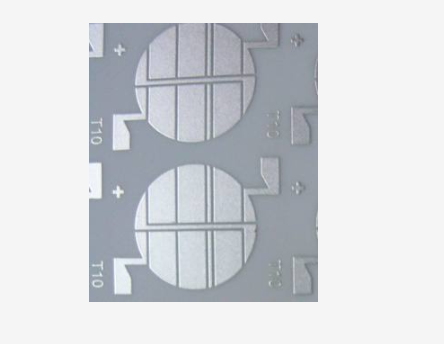What types of ceramic substrates are there?
Ceramic substrate refers to a special process board in which copper foil is directly bonded to the surface of alumina (Al2O3) or aluminum nitride (AlN) ceramic substrate (single-sided or double-sided) at high temperatures. The made ultra-thin composite substrate has excellent electrical insulation properties, high thermal conductivity, excellent solderability and high adhesion strength, and can be etched into various patterns like a PCB board, and has a large current carrying capacity. ability.
What types of ceramic substrates are there?
1. Divided by material
1. Al2O3
Alumina substrate is the most commonly used substrate material in the electronics industry. It has high strength and chemical stability, and is rich in raw material sources. It is suitable for a variety of technical manufacturing and different shapes.
2. BeO
It has higher thermal conductivity than metal aluminum and is used in applications requiring high thermal conductivity. However, the temperature drops rapidly after the temperature exceeds 300°C.
3. AlN
AlN has two very important properties: one is high thermal conductivity, and the other is expansion coefficient matching Si.
The disadvantage is that even a very thin oxide layer on the surface will affect the thermal conductivity.
In summary, it can be known that due to its superior comprehensive performance, alumina ceramics are still in a leading position in the fields of microelectronics, power electronics, hybrid microelectronics, power modules and other fields and are widely used.
Second, according to the manufacturing process

At this stage, there are five common types of ceramic heat dissipation substrates: HTCC, LTCC, DBC, DPC, and LAM. Among them, HTCC\LTCC are all sintering processes, and the cost will be higher.
1. HTCC
HTCC is also known as "high-temperature co-fired multilayer ceramics". The manufacturing process is very similar to LTCC. The main difference is that the ceramic powder of HTCC is not added to glass. HTCC must be dried and hardened into a green embryo at a high temperature of 1300~1600 degree Celsius, and then the via holes are also drilled, and the holes are filled and printed with screen printing technology. Because of the higher co-firing temperature, the choice of metal conductor materials However, the main material is tungsten, molybdenum, manganese and other metals with high melting point but poor electrical conductivity, which are finally laminated and sintered.
2. LTCC
LTCC is also called low-temperature co-fired multilayer ceramic substrate. This technology must first mix inorganic alumina powder and about 30%-50% glass material with an organic binder to make it evenly mixed into a mud-like slurry; Use a scraper to scrape the slurry into a sheet, and then through a drying process to form a thin green embryo; then drill through holes according to the design of each layer, as the signal transmission of each layer. The internal circuit of LTCC uses screen printing technology to fill holes and print circuits on the green embryo. The internal and external electrodes can be made of metals such as silver, copper, and gold. Finally, each layer is laminated and placed at 850~ Sintering and molding in a sintering furnace at 900°C can be completed.
3. DBC
The DBC technology is a direct copper coating technology, which uses copper's oxygen-containing eutectic liquid to directly apply copper to the ceramic. The basic principle is to introduce an appropriate amount of oxygen between the copper and the ceramic before or during the bonding process. In the range of degree Celsius~1083 degree Celsius, copper and oxygen form a Cu-O eutectic solution. DBC technology uses the eutectic solution to chemically react with the ceramic substrate to produce CuAlO2 or CuAl2O4 on the one hand, and on the other hand to infiltrate the copper foil to achieve the ceramic substrate and Combination of copper plates.
4. DPC
DPC technology uses direct copper plating technology to deposit Cu on Al2O3 substrates. Its process combines materials and thin film technology. Its product is the most commonly used ceramic heat sink substrate in recent years. However, its material control and process technology integration capabilities are relatively high, which makes the technical threshold for entering the DPC industry and stable production relatively high.
5. LAM
LAM technology is also called laser rapid activation metallization technology.
The above is the explanation of the classification of ceramic substrates shared by the editor of PCB factory. I hope you have more understanding of ceramic substrates.